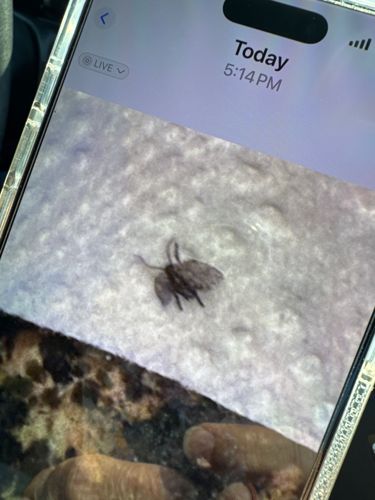Bat fly
Scientific Name: Nycteribiidae / Streblidae (Specific genus/species indeterminate from image)
Order & Family: Diptera (True Flies), Families: Nycteribiidae or Streblidae
Size: Typically 1-6 mm in length

Natural Habitat
Obligate ectoparasites of bats, found exclusively in bat roosts (caves, trees, buildings) or on the bats themselves.
Diet & Feeding
Feeds on the blood of bats (hematophagous).
Behavior Patterns
Highly specialized for parasitic life on bats. Many species are wingless or have vestigial wings, with strong claws for clinging to fur. They are often fast-moving, scuttling through the bat's fur to avoid dislodgement. They spend their entire life cycle on bats, with larvae developing internally and pupating shortly after being laid by the female.
Risks & Benefits
Generally no direct risk to humans as they are host-specific to bats and do not typically bite humans. They can be vectors for bat-specific parasites or microorganisms, but these are not usually transmissible to humans. Benefits are primarily within the bat ecosystem as part of the natural faunal community associated with bats.
Identified on: 9/9/2025